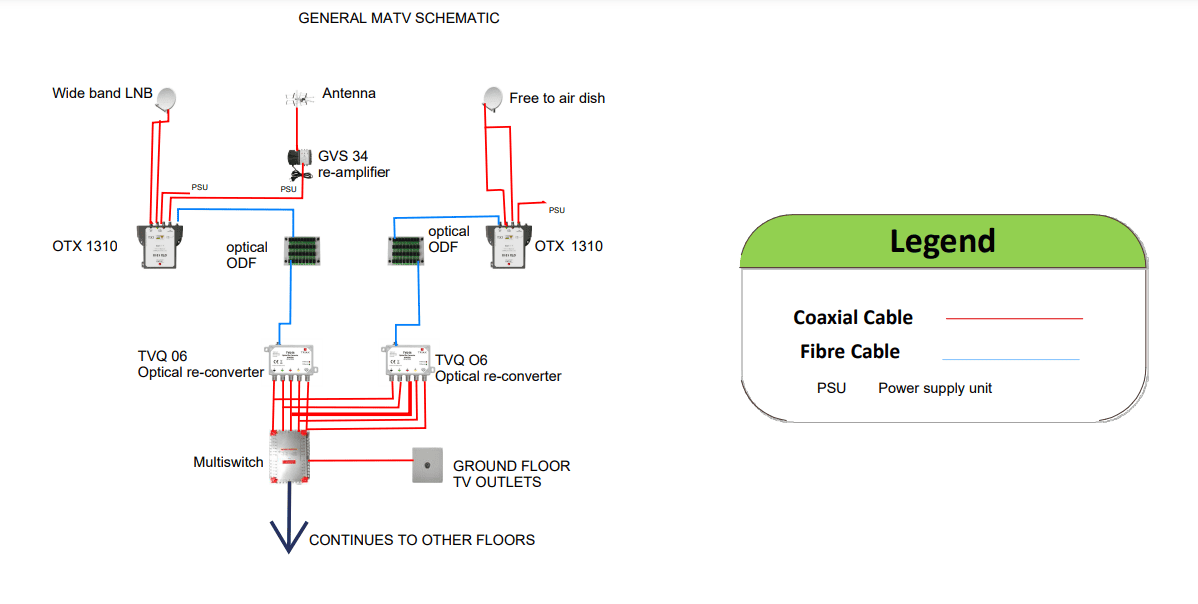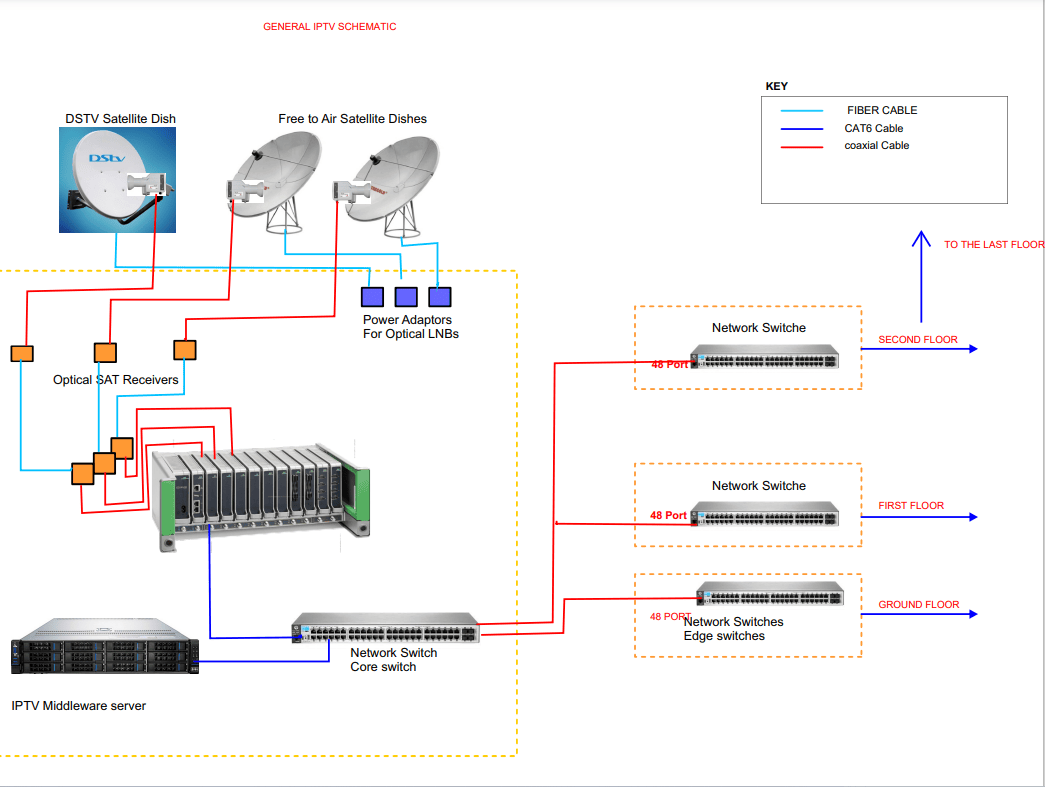Understanding MATV and IPTV Systems: Design and Installation
Understanding MATV and IPTV Systems: Design and Installation
Reliable and efficient television broadcasting systems are essential for a range of industries, from hospitality to residential complexes and educational institutions. Two popular solutions that meet the demands of modern television distribution are Master Antenna Television (MATV) and Internet Protocol Television (IPTV). This blog will walk through the basics of these systems, their benefits, and the design and installation processes that ensure smooth operation.
What is MATV?
Master Antenna Television (MATV) systems are used to distribute television signals from a central antenna to multiple receivers in a building or a group of buildings. MATV works by capturing TV signals, such as terrestrial broadcast channels, via an antenna and distributing them using coaxial cables to different outlets.

Key Features of MATV:
- Centralized Control: Signals are captured from a single antenna, reducing the need for multiple antennas in the same building.
- Wide Coverage: Can distribute signals to a large number of TV outlets, making it ideal for hotels, apartments, and office complexes.
- Cost-Effective: Reduces the cost of installation and maintenance compared to installing individual antennas for each TV.
What is IPTV?
Internet Protocol Television (IPTV) is a modern solution that delivers television content over the internet. Instead of relying on terrestrial signals, IPTV transmits digital content through an IP-based network. This system allows for greater interactivity and flexibility in content delivery and is gaining popularity in the hospitality industry, educational institutions, and large residential complexes.

Key Features of IPTV:
- Scalability: IPTV can serve a few rooms or thousands of devices, depending on the network's capability.
- Interactivity: Viewers can interact with the content, accessing on-demand services, pay-per-view, and more.
- Customization: Ideal for businesses that want to customize content based on different user profiles.
Designing MATV and IPTV Systems
Designing an MATV or IPTV system requires careful planning and technical know-how to ensure efficient operation. Here are the core steps involved in the design process:
1. Needs Assessment:
Before any installation begins, it is critical to assess the needs of the client. For MATV, this involves understanding the number of TV outlets required and the signal types (analog or digital). For IPTV, consider bandwidth requirements, the desired level of interactivity, and content management systems (CMS) needed to support the service.
2. Network Planning:
MATV systems are heavily dependent on signal strength and distribution. This involves selecting the appropriate antenna and determining the optimal cable routing throughout the building. IPTV requires robust internet connectivity with sufficient bandwidth to handle the simultaneous transmission of high-quality streams to multiple users.
3. Equipment Selection:
For MATV systems, equipment like amplifiers, modulators, and splitters are essential to boost signal quality and ensure even distribution. IPTV systems require servers, IP-based set-top boxes, and middleware to manage user access and deliver interactive features.
4. System Integration:
MATV and IPTV systems must be seamlessly integrated into the building’s infrastructure. This includes ensuring that MATV’s coaxial cables or IPTV’s Ethernet or fiber optic cables are correctly routed and terminated at each distribution point.
Installation Process
MATV Installation:
- Antenna Setup: The installation begins by mounting the TV antenna at a high point to capture the best possible signal. This is connected to a headend where the signals are processed.
- Signal Distribution: The signals are amplified and distributed via coaxial cables to each TV outlet in the building. Splitters and amplifiers are used to ensure consistent signal quality.
- Testing: Each TV outlet is tested to ensure that the signal is strong and the picture quality is clear.
IPTV Installation:
- Network Setup: A reliable internet connection with enough bandwidth is a priority. The IPTV server is set up and connected to the network switch for content distribution.
- Set-Top Box Installation: IP-based set-top boxes are installed at each endpoint (usually TVs or digital signage screens).
- Configuration and Testing: The system is configured to ensure that the right content reaches the correct users, and network traffic is managed to avoid bandwidth issues.
Benefits of MATV and IPTV Systems
MATV:
- Cost-Efficiency: Reduces the need for multiple antennas in large buildings.
- Low Maintenance: Once installed, MATV systems require minimal maintenance.
IPTV:
- Flexible Content Delivery: IPTV allows for on-demand viewing and interactive services.
- Customization: Content can be tailored to meet the preferences of different audiences.
- Future-Proof: With the growing demand for internet-based services, IPTV systems can easily integrate with other digital services.
Conclusion
Both MATV and IPTV systems are reliable solutions for distributing television signals across multiple users. MATV provides a cost-effective way of distributing terrestrial signals to a large number of outlets, while IPTV offers a modern, interactive experience for users through internet-based distribution. Whether it’s a hotel, office, or residential building, understanding the design and installation processes of these systems is crucial to delivering a seamless viewing experience.
At Talinda East Africa, we specialize in the design and installation of both MATV and IPTV systems, ensuring that your TV distribution needs are met with the highest level of expertise. Reach out to us today to learn more about our tailored solutions for your business.
